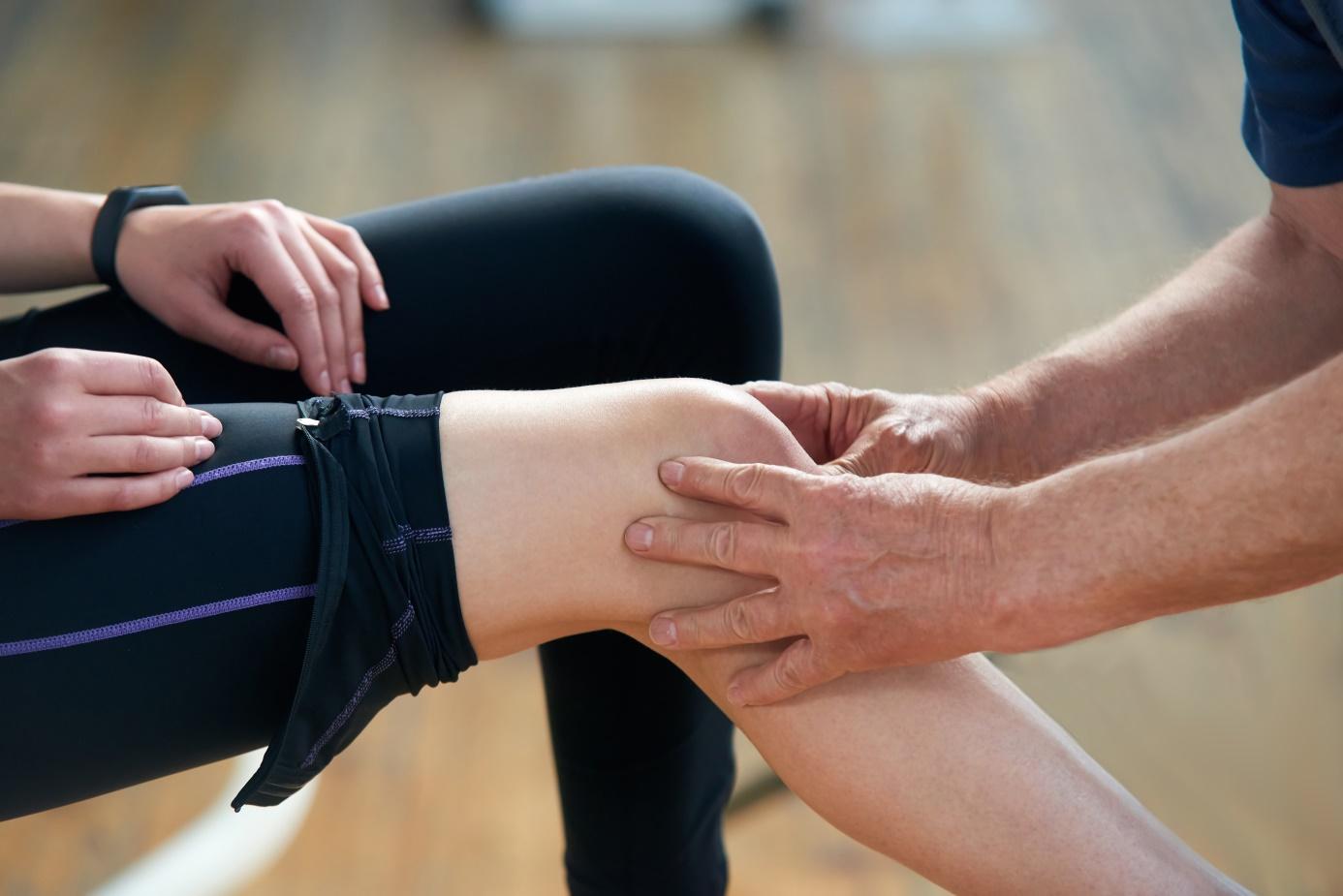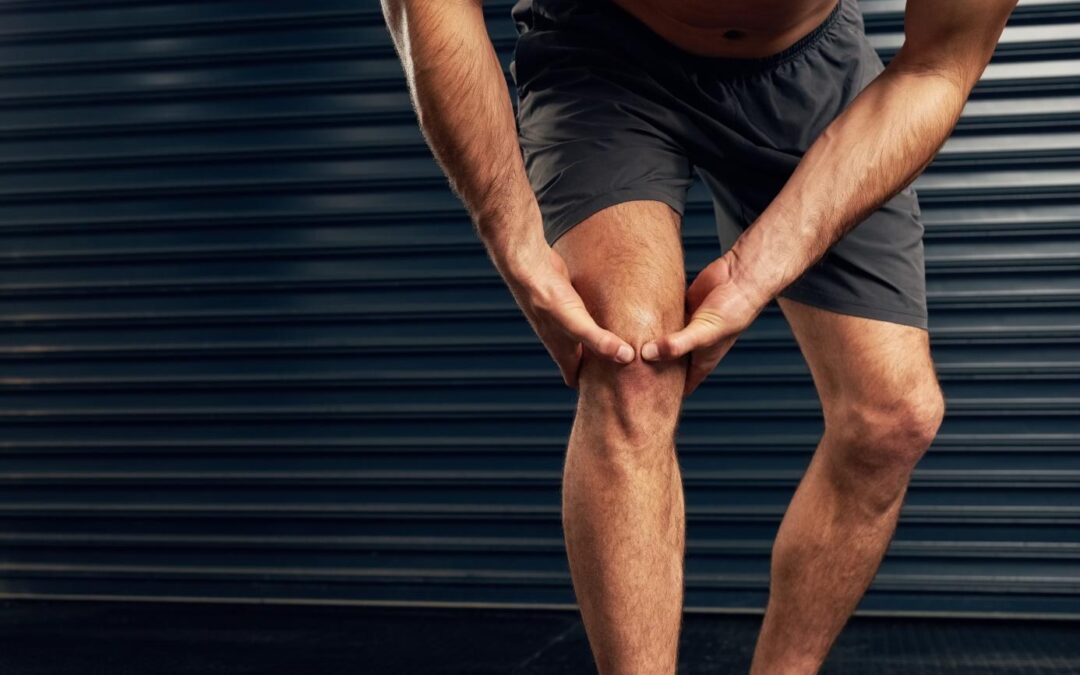Anterior Cruciate Ligament: Understanding, Preventing Tears, and This Intense Pain
A tear of the anterior cruciate ligament or ACL is a serious and common knee injury that primarily affects athletes, although it is not exclusive to them. To better understand, prevent, and treat it, discover its fundamental aspects.
What is an Anterior Cruciate Ligament Tear?
The anterior cruciate ligament, also called the ACL, is an essential ligament located in the center of the knee. It runs diagonally, starting from the tibia and attaching to the femur. Its primary role is to stabilize the knee by preventing the tibia from sliding forward relative to the femur and by limiting knee rotation.
An ACL tear corresponds to a severe knee sprain. Unlike other ligaments, the two torn ends of the ACL usually retract, preventing spontaneous healing. If this injury is not treated correctly, it exposes the knee to an increased risk of dislocation episodes, which can lead, in the medium term, to meniscus and cartilage damage and ultimately to premature knee wear, namely osteoarthritis.

What Are Its Symptoms?
The signs of an ACL tear can vary in intensity, but some symptoms are particularly telling:
- A sharp sound or a popping sensation in the knee at the moment of injury,
- Significant swelling of the knee that can occur within 6 hours after the injury, possibly indicating internal bleeding,
- Instability or pain in the knee when it bears weight,
- Complete loss of knee movement due to pain, swelling, or both,
- Pain or tenderness/swelling around the joint intersection and the knee,
- Discomfort or a strong feeling of instability in your knee (which “gives way” or “buckles”) when walking.
If you experience such symptoms after sports or other activities, it is crucial to stop immediately and consult a healthcare professional.

What Causes It?
ACL tears are very common in sports that involve pivoting movements, sudden direction changes, or impacts:
- The highest-risk sports include soccer, football, basketball, hockey, and skiing,
- The injury often occurs following a sudden deceleration from a pivoting movement, especially after a fall onto the knee. Jumps and other sudden movements can also damage the ACL,
- Only about 30% of cases are due to direct contact with other players or objects; the remainder are non-contact events,
- Even people who do not practice contact sports can suffer an ACL injury, for example, after falling from a ladder or twisting the knee while climbing stairs,
- With age, the ACL weakens, making people aged 40 and over more prone to this type of injury,
- Studies show that women are about three times more likely to suffer ACL tears than men of the same age group playing the same sport. This phenomenon remains debated, with several hypotheses proposed regarding differences in physical conditioning, muscle strength, neuromuscular control, pelvic and lower limb alignment, and the impact of estrogen on ligaments,
- An imbalance and muscle weakness in the body parts surrounding the knee—such as the pelvis, glutes, or ankles—are also significant risk factors.
How is an ACL Tear Diagnosed?
At the first signs of a knee injury, it is essential to consult a doctor or a physiotherapist promptly. Early management is crucial:
- If the injury causes swelling, an X-ray should be performed to rule out a bone fracture,
- If the X-ray is normal but a ligament injury is suspected, Magnetic Resonance Imaging (MRI) is recommended to confirm the diagnosis of an ACL tear and identify other potentially affected knee structures, such as the menisci.
How Long Can You Suffer From an ACL Tear?
Pain and difficulty walking can persist for several days or even weeks after the injury. The entire recovery process after an ACL tear can be lengthy and demanding, requiring considerable time and perseverance.
- For patients opting for surgery, a full return to sports generally does not occur before 8 to 10 months after the operation,
- Post-injury physiotherapy is crucial to prevent muscle loss. Although it is challenging to fully restore pre-injury joint mechanics and stability, most patients recover very well and return to their activities without significant issues.

What Treatments Are There for an ACL Rupture?
Treatment for an ACL rupture depends on several factors, including the severity of the injury, the patient’s age, activity level, and the presence of other lesions. It may involve first aid, physiotherapy, and, in some cases, surgical intervention.
Physiotherapy is a valuable ally at all stages of treatment, whether surgery has been performed or not.
- The physiotherapist’s actions aim to reduce pain and inflammation, and the professional provides advice on rest. They can also prevent muscle loss by implementing gentle exercises as soon as inflammation decreases,
- Before surgery, rehabilitation is often recommended to ensure the knee has recovered adequately from the accident. The goals are to reduce swelling, regain good active extension and knee mobility, decrease pain, and strengthen muscles, especially the quadriceps. This phase is also educational, preparing the patient for post-operative exercises,
- After surgery, physiotherapy begins within the first weeks following the operation. The objectives are to restore knee stability, strengthen muscles, improve balance, and enhance proprioception to develop protective reflexes. The program includes flexibility routines, strengthening exercises, and endurance activities,
- Conservative (non-surgical) treatment is suited for less active people or those with isolated injuries. In these cases, good recovery without surgery is possible. Physiotherapy then focuses on compensating for ligament insufficiency through muscle strengthening and proprioception training, thereby limiting instability.

How to Prevent an ACL Tear with Physiotherapy?
Physiotherapy plays a significant role in preventing ACL tears.
- Education and Awareness:
A physiotherapy professional informs you about the risks related to your sport, improper movements, or muscle imbalances. This approach helps you become aware of dangers and adopt the right reflexes.
- Technique Correction:
The physiotherapist can identify and teach you the correct way to perform your movements if your technique is deemed risky.
- Muscle Strengthening and Rehabilitation:
It is crucial to correct imbalances and muscle weaknesses that may not directly affect the knee but also impact the pelvis, glutes, or ankles. Targeted exercise programs are implemented to strengthen muscles, improve balance, and stability. For example, exercises to strengthen the glutes or calves are often recommended.
- Practical Advice:
The physiotherapist can also advise you on equipment to use or behavior to adopt during activity, such as stopping when tired or increasing rest breaks.

The Importance of Consulting a Specialist
When you suspect an ACL injury, consulting a healthcare professional is unavoidable:
-
Accurate and Rapid Diagnosis:
Prompt consultation with a doctor or physiotherapist enables an accurate diagnosis and rapid management—a crucial step to minimize the extent of the injury and optimize recovery chances.
-
Rehabilitation Expertise:
Physiotherapy professionals are essential in the prevention, treatment, and rehabilitation of ACL injuries. They can refer you to other specialists if needed, such as an orthopedic surgeon or a radiologist.
-
Personalized Treatment Plan:
Through a comprehensive evaluation, they develop a tailored rehabilitation program adapted to your activity level and the functionality of your uninjured leg.
-
Prevention of Recurrences:
Physiotherapists can not only help you recover but also prevent future injuries by strengthening your knee and teaching you proper practices.
-
Support and Perseverance:
Recovery can be a long and challenging process, but perseverance is essential. The physiotherapy professional will support you throughout the process, helping you regain stability and confidence to return to your activities safely. Not completing physiotherapy treatment increases the risk of new injuries.

Conclusion
The information we share with you is for informational purposes only and does not replace the observations of a doctor or healthcare professional. Clinics like AMS offer free consultations to help you begin your ACL recovery or relief journey.


Recent Comments